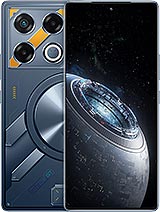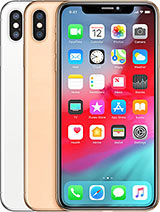Flashback: Symbian Belle almost caught up to Android, but it was too late

Last time we looked back at Nokia’s attempt to modernize Symbian with Anna, but that was only the first step. The next was called Belle, which brought the long-lived OS even closer to the modern design of its Android and iOS competitors.
Belle brought important quality of life changes that made the interface much more pleasant and usable. However, there’s no escaping that Symbian was playing catch-up to its rivals.
Let’s start with the basics and we do mean “basics”. First, the homescreen got a massive overhaul – you could now have up to 6 panes, up from 3 in Anna. And instead of the one-size-fits-all approach to widgets, widgets were now resizable and could be stretched or squished to one of 5 sizes.




Belle’s new homescreen let you add and resize widgets
And these were live widgets that could dynamically show messages (chat, email, social network updates). There was an even better place for notifications to go, but we’ll get to those in a minute.
We also need to cover the app drawer, which dropped the deeply nested labyrinth of folders for a flat approach – all shortcuts were visible, you just had to scroll to get to them. You could still add folders if you wanted to, but you no longer felt like you were navigating Windows 95’s Start menu. Even better, you could now put shortcuts on the homescreen itself, previously you had to use shortcut widgets, which was a clunky solution.
Then there was the notification shade. Popularized by Android makers and later adopted by iOS, this was an always-accessible place that had important toggles (mobile data, Wi-Fi, Bluetooth and Silent), plus all the notifications from apps.
The app switcher, however, remained unchanged. Also, if you notice in the app drawer, some apps have a dot in their upper left corners – this indicated that an app was running.
Symbian was old-school like that, it let you manually manage which apps are opened while Android and iOS do it automatically and discourage such intrusions by the user (though a “Close all apps” button is still a common sight on Android).
The web browser was improved a bit from what we saw in Anna with support for kinetic scrolling (that it the page follows your finger as you pan around) and text reflow, which made desktop pages (which was most of the web back then) easier to read on mobile. Full Flash support was still missing, but FlashLight 4 promised to play YouTube videos at 360p.
Nokia was an early adopter of NFC and it pushed it to new heights with Belle. You could tap two devices to pair them – this could be used with two phones to quickly exchange information or you could tap a phone to a pair of headphones or a Bluetooth speaker to connect them.



The NFC tutorial app from Belle
Anna was announced in April of 2011, Belle arrived in late August. The new OS version arrived with the Nokia 600, 700 and 701, but old devices were not left behind – Symbian^3 phones were updated too (Nokia N8, E7, X7, C7, E6, C6-01 and the Oro). Phones that initially came with Anna (like the Nokia 500) would get Belle too, of course. By 2012 the older devices that were still on sale (e.g. the Nokia N8) started arriving with Belle out of the box, saving you the hassle of a manual update.
The last incarnation of Symbian Belle was Feature Pack 2, which reworked the camera interface, added a video editing app, updated the browser with HTML 5 support, promised a “significantly faster” keyboard and included Nokia Car Mode (a simplified UI for the phone’s screen meant to be used in the car).
Well, technically it was “Nokia Belle” at this point as the Finns decided to drop the Symbian branding.
The phones had gone up to 1GHz processors and even 1.3GHz in the case of the Nokia 808 PureView and were equipped with 512MB of RAM. For comparison, the first generation of Anna phones had 680MHz processors and 256MB of RAM.

However, even mid-range Android phones of the era were starting to switch over to multi-core CPUs equipped with 1GB RAM. Symbian always ran better on resource-constrained devices than Android, but Moore’s law was still going strong and eventually new chipsets enabled new capabilities on Android, things like full Flash support and more advanced games.
The roadmap to the future included Symbian Carla and Donna, the former planned for late 2012/early 2013 with new widgets, a new web browser, even more NFC features and things like Dolby Surround. Donna was scheduled for late 2013/early 2014 and would have been exclusively released on phones with dual-core processors, helping to close the performance gap to Android and the other competing OSes.

Worrying new broke on May 23 2012, saying that Carla was canceled. Not so, said Nokia officials a couple of days later, actually Carla would be released as Belle Feature Pack 1. And there came a Feature Pack 2 as we mentioned above, but that was not Donna. Donna would never be released and there were no more feature packs either.
The Nokia 808 PureView became the last Symbian phone – the OS certainly went out on a high note. We can only speculate what would have been if the Finns stuck with it and released new phones with Donna.
Related
Reader comments
- atichko
- 14 Mar 2024
- M{V
If HMD really want's to make a splash then I would say, bring back Symbian OS, but then as it should have been. That will only be a dream as it takes a whole lot of people and money to (re)design an OS, bring it up to standards (or have it excee...
- Minu
- 06 Mar 2024
- IWU
Especially Symbian is extremely capable of making the most out of threshold specs, when the other popular OSs chase after larger hardware requirements, plus it's a real-time OS too!!!
- SizN80
- 09 Dec 2023
- ru1
I do wish Symbians had been further developed, Nokia fell far too hard to pressure and I guess hindsight is 20/20. Developers were really not into Symbian unfortunately. I wish they had transitioned earlier to Android rather than allowing themse...





















 Samsung
Samsung Infinix
Infinix Apple
Apple Apple
Apple Xiaomi
Xiaomi


